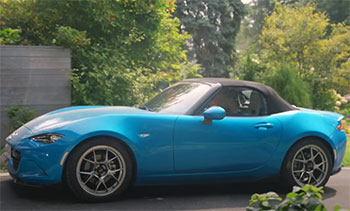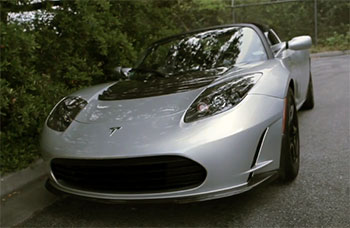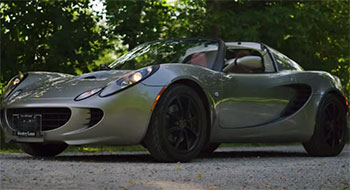I’ve always been drawn to cars that make your heart race, where the road feels like an extension of your will. The Lotus Elise and the original Tesla Roadster (2008-2012) are two such machines, each a legend in its own right.
My goal here is to take you along on my journey comparing these iconic sports cars, exploring their strengths and weaknesses from behind the wheel. Through a first-person lens, I’ll break down what makes each car tick, share their pros and cons, and help you decide which one might ignite your passion for driving.
Comparison Table: Lotus Elise Vs. Tesla Roadster
| Feature | Lotus Elise (2011) | Tesla Roadster (2008-2012) |
|---|---|---|
| Powertrain | 1.8L 4-cylinder, 217 hp | Electric motor, 288 hp |
| 0-60 mph | 4.5 seconds | 3.9 seconds |
| Top Speed | 145 mph | 125 mph |
| Weight | ~2,000 lbs | ~2,700 lbs |
| Transmission | 6-speed manual | Single-speed |
| Range | ~300 miles (fuel) | ~245 miles (electric) |
| Price (Base, 2011) | $51,845 | $109,000 |
| Drive | Rear-wheel drive | Rear-wheel drive |
| Chassis | Bonded aluminum | Modified bonded aluminum |
| Body Material | Fiberglass | Carbon fiber |
| Cargo Space | 170 liters | 170 liters |
My Experience With the Lotus Elise

Driving the Lotus Elise feels like slipping into a perfectly tailored suit—if that suit were designed for a racetrack.
My first spin in a 2011 Elise SC was a revelation. The car’s featherweight design, tipping the scales at just around 2,000 pounds, makes it feel like an extension of your body.
Every input—steering, braking, accelerating—translates instantly, with no fluff or delay.
The 1.8-liter Toyota-sourced four-cylinder engine, supercharged to produce 217 horsepower, sings a mechanical symphony as you row through the six-speed manual gearbox.
It’s not about raw power; it’s about precision. On a winding backroad, the Elise dances, gripping corners with surgical accuracy thanks to its mid-engine layout and Lotus’s legendary suspension tuning.
The interior is spartan, almost monastic. You’re greeted by exposed aluminum, minimalistic seats, and a steering wheel that feels like it was carved for your hands. Getting in and out is a gymnastic feat due to the wide sills, but once you’re in, it’s pure driving bliss.
I remember taking it through a mountain pass, the engine wailing at 8,000 rpm, and feeling like I was in a go-kart with a license plate. The Elise doesn’t just drive; it communicates. Every pebble, every dip in the road, is relayed through the unassisted steering. It’s raw, unfiltered, and exhilarating.
But it’s not all roses. The Elise is a commitment. It’s loud, the ride is stiff, and creature comforts are scarce. No cupholders, no fancy infotainment—just you, the car, and the road. I took it on a long highway drive once, and by the end, my ears were ringing, and my back was begging for mercy.
Yet, for those moments when you’re carving up a twisty road, it’s hard to imagine anything better. The Elise embodies Colin Chapman’s mantra: “Simplify, then add lightness.” It’s a car for purists, for those who value driving above all else.
Pros Of the Lotus Elise
- Lightweight agility: At roughly 2,000 pounds, the Elise is a featherweight champion. Its low mass makes it incredibly nimble, allowing it to change direction with the flick of a wrist. I’ve never driven anything that feels so alive in corners, responding to inputs like a race car.
- Precise handling: The mid-engine layout and finely tuned suspension give the Elise scalpel-like precision. On a track day, I pushed it through hairpins and sweepers, and it stayed planted, with feedback that made me feel like a better driver than I am.
- Engaging manual gearbox: The six-speed manual is a joy, with short throws and a mechanical click that makes every shift satisfying. Rev-matching downshifts on a backroad felt like conducting an orchestra.
- Unique styling: The Elise’s curvy, compact design turns heads. Its low-slung stance and aggressive lines give it a Hot Wheels vibe that stands out in a sea of cookie-cutter cars. I parked it at a car show once, and it drew a crowd.
- Fuel efficiency: For a sports car, the Elise is surprisingly frugal, averaging around 30 mpg in casual driving. This made it a guilt-free weekend toy, even when I wasn’t pushing it hard.
- Driver connection: The unassisted steering and minimal electronics create a direct, unfiltered connection to the road. You feel every nuance, which is both thrilling and educational for improving driving skills.
Cons Of the Lotus Elise
- Harsh ride quality: The stiff suspension, designed for track performance, makes daily driving a challenge. Potholes feel like personal attacks, and long drives left me fatigued. I once hit a speed bump too fast and winced for the car’s sake.
- Minimalist interior: The cabin is bare-bones, with exposed aluminum and no modern amenities. There’s no infotainment system, and the seats, while supportive, aren’t built for comfort. I missed having a place to put my coffee.
- Difficult ingress/egress: Getting in and out requires contortionist skills due to the wide door sills. I nearly face-planted trying to exit gracefully at a gas station.
- Limited practicality: The 170-liter trunk is tiny, barely fitting a weekend bag. I had to plan trips carefully, leaving most creature comforts at home.
- Noise levels: The engine’s wail is glorious at 8,000 rpm, but constant road noise and wind roar make highway drives exhausting. Earplugs became my co-pilot on long trips.
- Limited availability: The Elise was discontinued in the U.S. in 2011 due to regulatory issues, making it a rare find. Parts and service can be tricky, and I worried about long-term maintenance.
My Experience With the Tesla Roadster

The Tesla Roadster, the original from 2008-2012, is a different beast. My first drive in one was like stepping into the future. The silence of the electric motor was eerie, broken only by a faint whine as I floored it. With 288 horsepower and instant torque, the Roadster launches like a rocket, hitting 60 mph in about 3.9 seconds. It’s not just fast; it’s relentless, pinning you to the seat without the drama of an engine roar. The carbon-fiber body, built on a modified Lotus Elise chassis, keeps it relatively light at 2,700 pounds, but you feel the extra weight compared to the Elise.
The Roadster’s interior is a step up from the Elise, with plusher seats and a touch of luxury, though it’s still tight. The dashboard, shared with the Elise, feels familiar, but the push-button “shifter” on the console screams modernity. I took it on a coastal highway, and the instant acceleration made passing effortless. Handling is sharp but not as razor-edged as the Elise, with the battery pack adding weight that you notice in tight corners. The range, about 245 miles, was decent for its time, but I always kept an eye on the battery gauge, especially on longer drives.
The Roadster is a conversation starter. People gawked, asked questions, and marveled at its stealthy power. It’s a car that challenges preconceptions about electric vehicles, proving they can be thrilling. But it’s not perfect. The weight dulls its agility, and reliability issues from its early production days gave me pause. Still, driving it felt like being part of history—the car that launched Tesla’s revolution.
Pros Of the Tesla Roadster
- Blistering acceleration: The electric motor’s instant torque delivers a 0-60 mph time of 3.9 seconds, outpacing the Elise. I floored it from a stoplight and left a muscle car in the dust, grinning ear to ear.
- Quiet operation: The near-silent electric motor is a stark contrast to the Elise’s roar. It’s relaxing on long drives and lets you enjoy the scenery without earplugs.
- Eco-friendly credentials: As an electric vehicle, the Roadster produces zero emissions. I felt good knowing my joyrides weren’t harming the planet.
- Unique design: The carbon-fiber body and sleek lines make it a head-turner. Its stealth-gray paint, as one owner called it, gave it a futuristic edge that stood out at car meets.
- Low maintenance: With fewer moving parts than a gas-powered car, the Roadster requires less upkeep. Tesla’s mobile service units, which I used once for a software update, were a game-changer.
- Historical significance: Driving the Roadster feels like owning a piece of automotive history. It’s the car that put Tesla on the map, and I felt proud to be behind the wheel.
Cons Of the Tesla Roadster
- Heavier handling: At 2,700 pounds, the Roadster feels less agile than the Elise. I noticed understeer in tight corners, and it lacked the Elise’s go-kart nimbleness.
- Battery range anxiety: The 245-mile range is decent, but fast driving or cold weather cuts it down. I found myself planning routes around charging stations, which was stressful.
- Reliability concerns: Early Roadsters had issues, like motor overheating or transmission failures. A friend who owned one dealt with a costly battery replacement, which made me wary.
- Limited cargo space: Like the Elise, the 170-liter trunk is tiny. I struggled to fit groceries, let alone luggage for a weekend trip.
- High cost: Starting at $109,000, the Roadster was over twice the Elise’s price. Even used, they’re pricey, and I questioned whether the performance justified the cost.
- Charging infrastructure: In 2008, charging stations were rare. I relied on home charging, which took hours, making spontaneous road trips a challenge.
Analyzing the Core Differences

The Lotus Elise and Tesla Roadster share DNA, but they’re more like distant cousins than siblings.
The Elise, with its gasoline-powered heart, is a purist’s dream—light, raw, and unforgiving.
Its 217 horsepower feels plenty when you’re tossing it through corners, and the manual gearbox keeps you engaged.
The Roadster, meanwhile, is a glimpse into the future. Its electric powertrain delivers instant, neck-snapping torque, but the added weight of the battery pack—about 1,000 pounds—dulls its agility compared to the Elise.
The Roadster’s chassis, while based on the Elise’s bonded aluminum design, was heavily modified to accommodate the battery, resulting in a slightly longer wheelbase and redesigned subframes.
From a semantic perspective, the Elise is about the art of driving. It’s for those who crave feedback, who want to feel every nuance of the road. The Roadster, on the other hand, is about effortless power and innovation.
It’s for those who want to push boundaries, to embrace a new era of performance without sacrificing the thrill. I found myself torn: the Elise’s purity was intoxicating, but the Roadster’s silent ferocity was unlike anything I’d experienced.
On the track, the Elise shines. Its lightweight chassis and precise steering make it a corner-carving weapon. I took it to a local track day, and it outpaced cars with twice the horsepower, thanks to its agility. The Roadster, however, struggles on the track.
Its weight makes it less nimble, and I noticed the motor overheating after a few hot laps, as one tester reported a “Motor getting hot. Power reduced” warning. On the road, though, the Roadster’s instant torque makes it a beast in straight-line acceleration, perfect for quick bursts on open highways.
Cost is another factor. The Elise, starting at $51,845 in 2011, was a relative bargain for a sports car of its caliber. The Roadster, at $109,000, was a premium purchase, reflecting its groundbreaking technology.
Today, used Elises are more affordable but harder to find due to their U.S. discontinuation, while Roadsters hold their value due to rarity and historical significance. Maintenance also differs: the Elise requires regular oil changes and engine upkeep, while the Roadster’s electric drivetrain is low-maintenance but vulnerable to costly battery issues.
Driving Dynamics and Real-World Use
Let’s talk about how these cars feel in the real world. The Elise is a weekend warrior. I loved taking it on twisty backroads, where its lightweight design and mid-engine balance made every corner a playground. But daily driving? It’s a chore. The stiff ride, noisy cabin, and lack of storage made errands feel like a mission. I once tried to pick up a friend, and we barely squeezed his backpack into the trunk.
The Roadster, by contrast, is more livable. Its quieter cabin and plusher seats made long drives more bearable, and the instant torque was a blast in city traffic. I zipped past slower cars with ease, feeling like a superhero. But the weight was noticeable in tight turns, and I constantly worried about range, especially on unplanned trips. Charging at home was fine, but the lack of fast chargers in 2008 made road trips a logistical puzzle.
Both cars are impractical by modern standards. Neither has room for more than a small bag, and both require athleticism to enter and exit. The Elise demands more from the driver, rewarding skill with unmatched feedback. The Roadster, with its single-speed transmission, is easier to drive fast but less engaging in the long run. I found myself craving the Elise’s manual gearbox after a week with the Roadster’s push-button setup.
Emotional Connection and Legacy
The Elise and Roadster evoke different emotions. The Elise is a love letter to driving purists. Every time I climbed in, I felt like I was preparing for a performance, not just a drive. It’s a car that demands your focus and rewards your effort. The Roadster, meanwhile, is a statement. It’s about proving electric cars can be cool, fast, and desirable. Driving it felt like being part of a movement, a shift toward a sustainable future without sacrificing fun.
The Roadster’s legacy is undeniable. It launched Tesla, paving the way for the Model S, Model 3, and beyond. Without it, the electric vehicle revolution might have taken longer. The Elise, though, is a timeless icon. Its design and philosophy influenced countless sports cars, including the Roadster itself. I felt a pang of sadness knowing the Elise was discontinued in the U.S. in 2011, while the Roadster’s rarity makes it a collector’s item.
Frequently Asked Questions (FAQ)
No, the Tesla Roadster is not a Lotus Elise. It uses a heavily modified Elise chassis, but only about 7% of parts are shared, including the windshield and dashboard. The Roadster’s electric drivetrain and carbon-fiber body make it a distinct vehicle.
The Tesla Roadster is based on the Lotus Elise chassis, but it’s not a Lotus. It’s a Tesla with a unique powertrain, body panels, and modified chassis, built in collaboration with Lotus.
The Lotus Elise was legal in the U.S. from 2005 to 2011. After 2011, it was discontinued due to stricter safety and emissions regulations, though some models can be imported under specific exemptions.
The Lotus Elise excels due to its lightweight design, precise handling, and driver-focused engineering. Its minimalistic approach and mid-engine layout deliver an unmatched connection to the road, making it a favorite among enthusiasts.
Conclusion: For You, the Driver
You’re standing at a crossroads, eyeing the Lotus Elise and Tesla Roadster, each calling to a different part of your soul. If you crave raw, unfiltered driving, the Elise is your match. Its lightweight agility and manual gearbox will make every drive an event, though you’ll sacrifice comfort and practicality. If you want a taste of the future—blistering acceleration, eco-friendly credentials, and a piece of automotive history—the Roadster beckons. It’s less nimble but more livable, with the caveat of range anxiety and potential reliability woes. For me, the Elise’s purity wins, but your heart might lean toward the Roadster’s innovation. Which one speaks to you?

